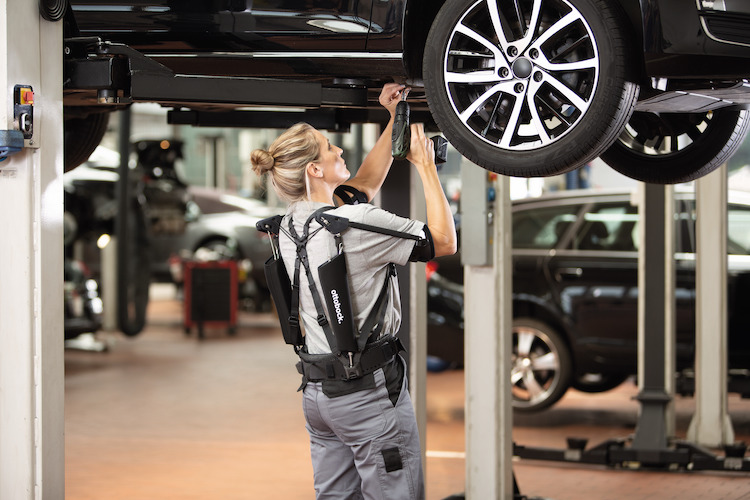
Exoskeleton market projected to grow to $6 billion
The current robotics limelight tends to focus on the ability of new innovations to automate tasks, but a less publicized development is taking place whereby passive exoskeletons have been slowly deployed and adopted to help augment the capability of human workers.
Exoskeleton popularization through passive suits will provide a base for increased resources for powered suits, which will eventually provide significant augmentative capability to the industrial workforce.
By 2028, global Exoskeleton revenues will reach $5 billion with hundreds of thousands of active exoskeletons being deployed, according to ABI Research. The research consultancy’s findings are on its report, Exoskeletons for Industrial Use Cases.
The greatest opportunity for the exoskeleton lies in augmenting industrial production workers.
Though only a small number of exoskeletons have enjoyed commercial success, their potential is attracting the attention of end users as NASA, Boeing, Toyota, GM as well as those in the logistics space.
Rian Whitton, senior analyst at ABI Research, says: “We are only talking about thousands of units being deployed so far, and the majority of these are passive. The first challenge of getting exoskeletons deployed and mandated as part of protective equipment practices in high-wage OEMs has been achieved.
“The next challenge for powered suits to gain popularity is the effective deployment of IoT platforms that can aggregate sensory data from the exoskeletons and provide insights.
“The next stage is to integrate the use of exoskeletons with robotic arms, collaborative robots, and mobile robots through advanced location technologies, haptics, and gesture control.”
ABI says this is a long-term vision, and the industry should not expect the exoskeleton opportunity to exceed hundreds of thousands of units or billions in revenue within the next two to three years, with the global market to surpass $1 billion in 2022.
In one case of deployment, Levitate Technologies, a California-based manufacturer, has already deployed hundreds of suits in Toyota plants across the United States and has had their equipment mandated as protective equipment.
This is further testament to the rapid deployment of passive suits, which are not only currently more cost-efficient, but also more limited than their robotic counterparts.
Two major powered exoskeleton suppliers, German Bionic Systems and Sarcos, are making their first plays in the market.
GBS has developed an IoT platform and will ramp up production next year with the completion of their new factory, and Sarcos is beginning to test its heavy exoskeleton in military infrastructure through a slew of contracts with the US government.
The Japanese market is thriving through companies like Cyberdyne and Panasonic Atoun, while the opportunity presented by China is still in its infancy.
Though the exoskeleton industry holds great promise, a few PoCs using mainly passive suits do not automatically guarantee future success. Simply deploying these expensive and highly sophisticated pieces of hardware will be insufficient to meet the challenges of labor shortages and aging workforces, as most of the value bundled up in the technologies of future manufacturing will require the advanced use of data and monitoring of devices.
Whitton says: “In the industrial internet of things, suits cannot be dumb. Thus, there must be a viable business model, increasing adoption of RaaS, and a demonstrable ability of both providers and end-users to draw insights from collected data.
“Establishing partnerships with the cloud providers and industrial platforms who will ultimately enable the value add-on needed to differentiate providers will also be key.
“Furthermore, organizations like the association for exoskeleton industries (VDEI) are important for developing standardization when it comes to best practices.”


